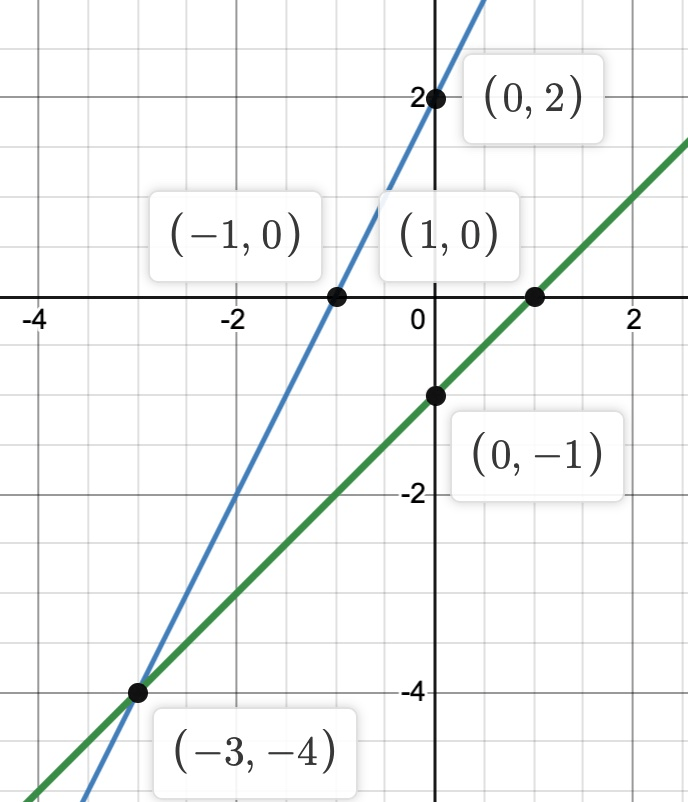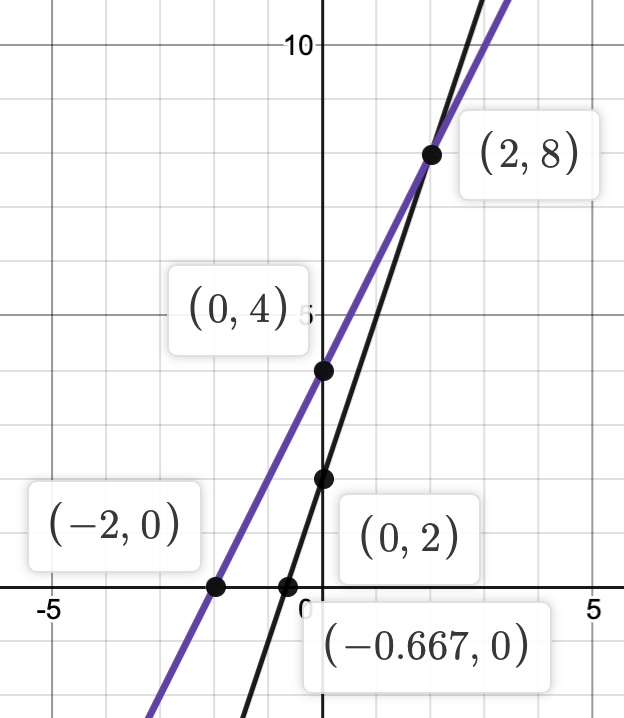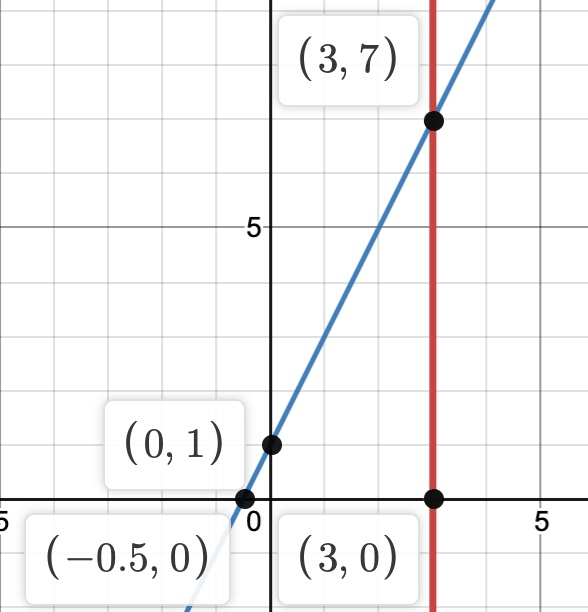something with another thing
y = 2x + 2
y = x − 1
(-3, -4)
y = 2
3x + 2y = 10
(2, 2)
x + 3y = 5
2x − 3y = −8
(−1, 2)
The name of two or more linear equations with the same variables.
System of linear equations (linear system)
y = 2x + 4
y = 3x + 2
(2, 8)

x + 3y = 2
−x + 2y = 3
(−1, 1)
−5y + 8x = −18
5y + 2x = 58
(4, 10)
The method of solving equations where you add or subtract equations to end up with one variable.
Elimination Method
x = 3
y = 2x + 1
(3, 7)

x − 2y = −10
3x - y = 0
(2, 6)
-1.5x + 2.5y = 0.5
2x + y = 1.5
(0.5, 0.5)
How can you tell if a linear system has infinitely many solutions?
The equations are the same, the graphed lines lie on top of one another, or the slope and y-intercept are the same.
4x + 2y = 8
2x + y = 4
Every point on 2x+y=4 is a solution.

2x – 3y = –2
4x + y = 24
(5, 4)
3x − 4y = 8
18x − 5y = 10
(0, -2)
When will a system of linear equations have no solution?
The lines are parallel or they have the same slope and different y-intercepts
y = 1/2 x + 2
y = 1/4 x + 4
(8, 6)

2/3x + 5/2y = 28
3/4x - 1/8y = 8
(12,8)
4x−9y = 2
12x−5y = −38
(-4, -2)
2(3x-y) + 3(x - 3y)=-21
2x - (3y + x) = -2(x + y) + 9
(5,6)